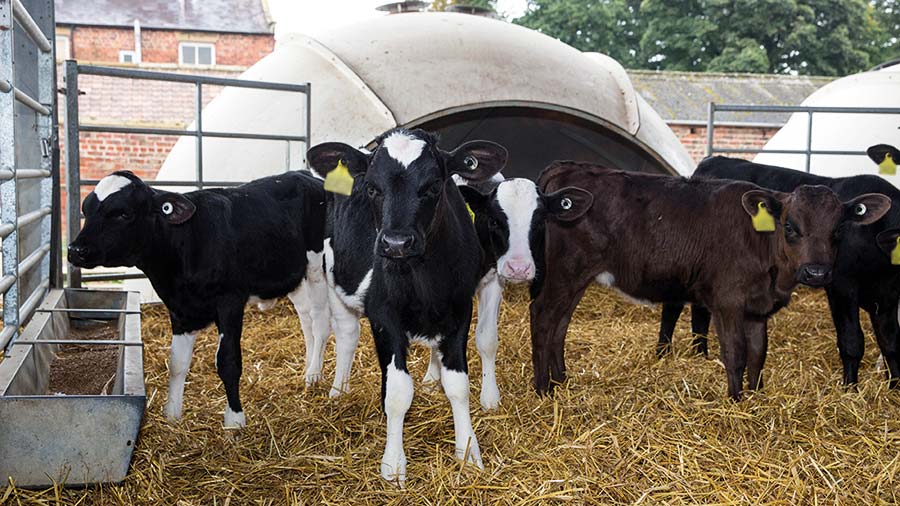4 ways to improve on 60-day calf mortality rate
 © Tim Scrivener
© Tim Scrivener Healthy calves can achieve growth rates of 1,080g/day, but just one day of diarrhoea reduces this by 80g.
A calf with respiratory disease will lose 180g/day off its growth rate – and an unlucky calf with both diseases will drop 202g/day.
Scouring calves lose vital nutrients that help them fight disease, and this makes them more susceptible to respiratory disease.
See also: Advice on supportive care of scouring calves
“Calves with diarrhoea are 14% more likely to have respiratory disease, and a calf with both has a 22% mortality rate in the pre-weaning period,” said Dr David Renaud, from Guelph University in Canada.
A literature review revealed 14% of calves died before 60 days of age, on average. David said that for societal buy-in, this needs to be reduced, particularly as it relates mostly to health reasons.
He cited four key areas to managing mortality:
- Successful transfer of passive immunity – dairy farmers feeding three feeds had lower pre-weaning mortality
- Calving – calves born from a difficult calving are more likely to die (and survivors live with ill health)
- Environments should be clean and dry
- Nutrition – farms feeding more than 9 litres a calf a day had lower mortality rates.
While he admitted that dairy farmers are tired of hearing the same message about colostrum, he said it was the “magic bullet” to achieve high levels of passive immunity.
To quantify success, blood testing calves can show how effective a farm’s colostrum protocol is.
Monitoring blood tests can be done using samples from 10-15 calves, and if they look well and the results meet targets, a quarterly spot check will suffice.
“If calves are struggling, keep monitoring till they improve,” he said, adding that the optimal age for testing is between one and three days.
Dr David Renaud was speaking at the recent Trouw Nutrition Calf Symposium, Nottingham
